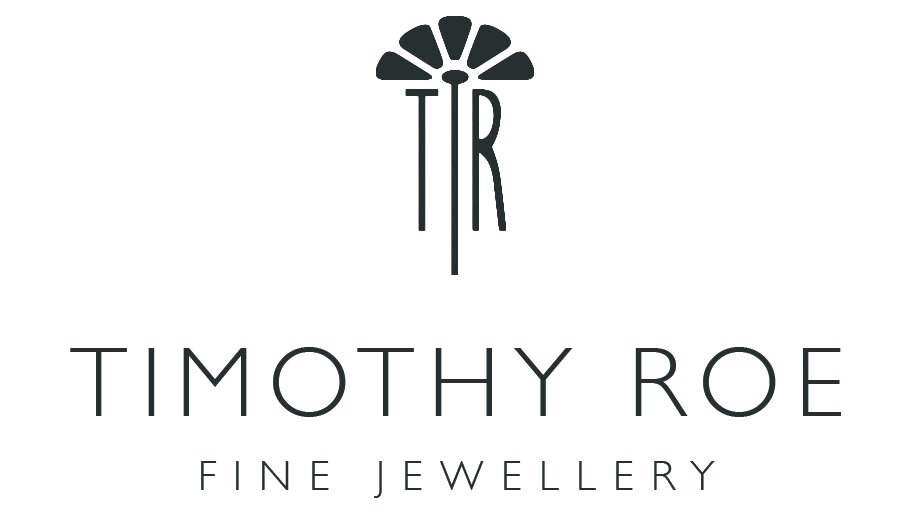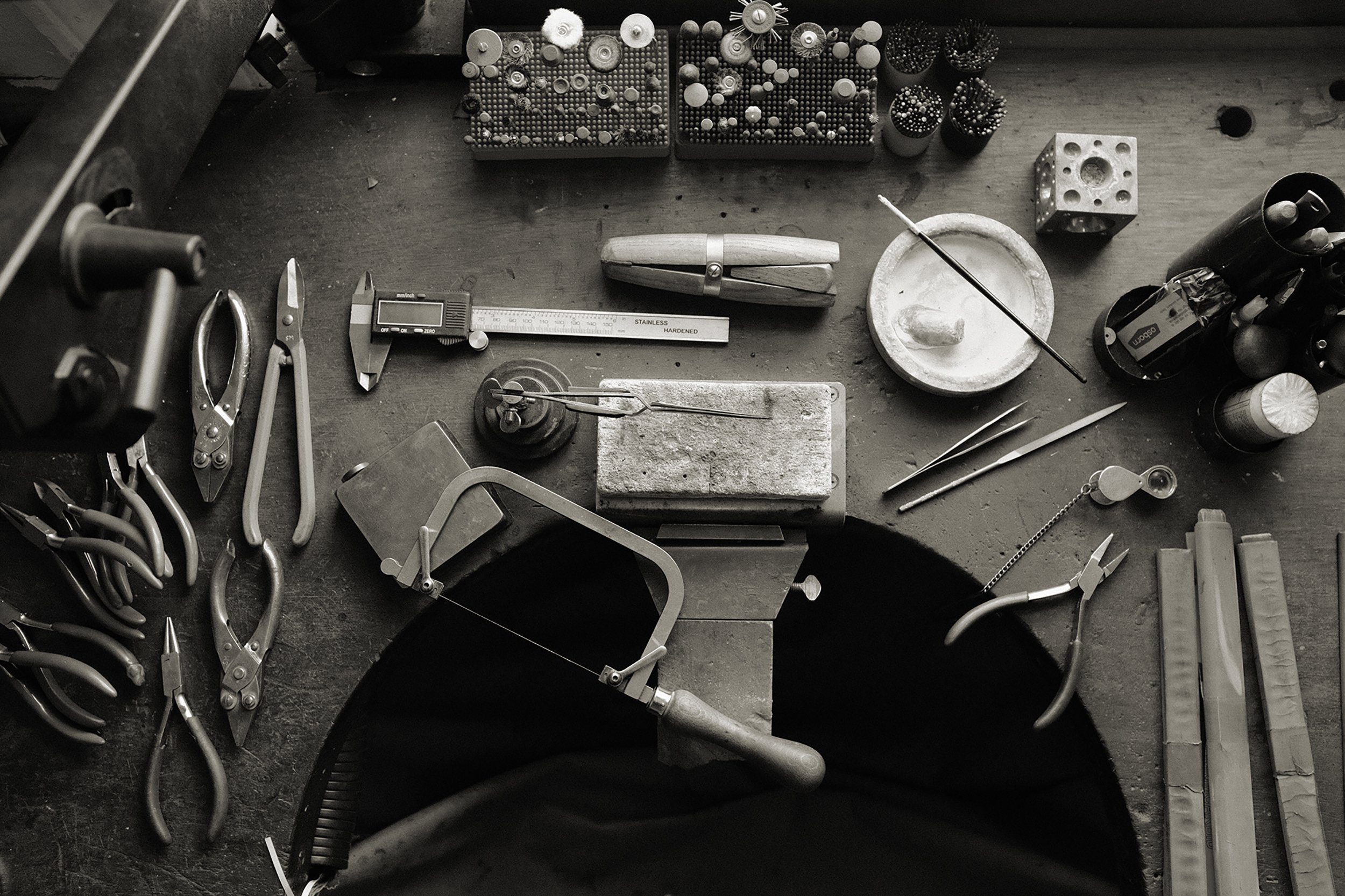What Is Hallmarking?
Understanding the Mark of Quality in Jewellery
When purchasing fine jewellery or precious metal items, you may notice tiny stamps or symbols discreetly engraved on the surface. These are called hallmarks—a centuries-old guarantee of quality and metal purity, offering both protection and confidence to consumers. These little stamps provide important information and can tell someone about a piece of jewellery especially if it is an inherited or second hand piece. For example, it can tell you who made the item or what year it was made. At Timothy Roe Fine Jewellery, every piece we make is individually hallmarked, your finished piece will carry this quiet but important stamp of quality.
In this blog article, we’ll explore what hallmarking is, why it’s important, and what each part of the hallmark tells you. Additionally, we will also reveal the Timothy Roe Fine Jewellery mark and why it is so special, unique and makes us stand out.
What is a Hallmark?
A hallmark is a small, sometimes microscopic, collection of stamped symbols that certifies the precious metal content of your jewellery. It’s an official guarantee that what you’re buying is exactly what it claims to be. Whether it’s 18k gold, platinum, silver, or another precious metal. Hallmarking isn’t optional in the UK. It’s a legal requirement for any item sold as gold, silver, platinum or palladium (above certain weights). And that’s where the Assay Offices come in.
Assay = The testing of a metal or ore to determine its ingredients and quality.
Why Hallmarking Matters
Hallmarking is not just a tradition—it is a legal requirement in the UK for most precious metal items being sold above a certain weight. It provides:
Consumer Protection – Ensures you are getting what you pay for.
Quality Assurance – Confirms the item has been tested and verified.
Traceability – Identifies the maker and origin of the piece.
Without a hallmark, it is impossible to be certain of the metal content just by appearance.
A Brief History of Hallmarking in the UK
Britain has one of the oldest hallmarking systems in the world, dating back over 700 years. It began in 1300 when King Edward I passed a law requiring all silver items to be assayed and marked.
Today, there are four Assay Offices in the UK, each authorised to apply hallmarks:
London
Birmingham
Sheffield
Edinburgh
Each has its own distinctive town mark, still used as part of the full hallmark. Here at Timothy Roe Fine Jewellery, we send all of our pieces to the London Assay Office. A historic institution known for its precision, heritage, and iconic leopard's head mark.
🏛 The Assay Office Mark
🐆 Leopard’s head = London
⚓ Anchor = Birmingham
🌹 Rose = Sheffield
🏰 Castle = Edinburgh
The symbols for the assay offices in the UK were largely determined through a combination of historical factors and, in some cases, a bit of chance. The London Assay Office, for example, uses the leopard's head (originally a lion), a symbol with historical ties to the Goldsmiths' Company and the city of London. The symbols for Birmingham and Sheffield are said to have been chosen through a coin toss after meetings were held at the Crown and Anchor pub in London. Birmingham took the anchor and Sheffield the crown but later the crown was changed to a rose.
Traditional hallmarking tools and stamps
✅ UK Hallmark Reference Guide
Know what you're looking at when you inspect your jewellery
What Do the Hallmarks Mean?
A full UK hallmark typically consists of three compulsory symbols and optional additional marks:
Compulsory: The Sponsor’s Mark, The Fineness Mark, The Assay Office
Optional: The Traditional Fineness Symbol, The Date Letter, Commemorative Mark, International Convention Mark
Let’s break these down and show you some examples using our own Timothy Roe Hallmark.
🛡️ The Sponsor's Mark
This identifies the maker or company responsible for submitting the item for hallmarking. It usually consists of initials inside a unique shaped shield.
🔢 The Metal and Fineness Mark
This shows the type of precious metal and its purity. For example:
925 = Sterling silver (Inside an oval shape set horizontally)
750 = 18 ct gold (Inside an octagonal shape set horizontally)
585 = 14 ct gold (Horizontal octagonal shape)
375 = 9 ct gold (Horizontal octagonal shape)
950 = Platinum (Usually inside a little 5-sided shaped house)
950 = Palladium (Each number set individually inside an oval shape set vertically)
📜(Optional) The Traditional Fineness Symbol
Historically, alongside the fineness mark a symbol representing the metal would also be stamped. Nowadays this isn’t used but in older pieces or if jewellers choose to use them you can still find them. This is an optional mark.
👑 Gold = The Crown symbol
The crown symbolizes wealth and the royal approval that hallmarking once required.
👸🦁 Silver = Lady Britannia (958) or Lion Passant or Lion Rampant (sterling silver 925)
Britannia reflects national pride and historic association with sterling silver. The lion passant (walking lion) or lion rampant (standing or rearing lion) is also used, especially on sterling silver.
⚪ Platinum = Royal Orb
The orb, a traditional symbol of sovereignty and high value, reflects platinum’s rarity and prestige.
🪖 Palladium = Centurion Head
This symbol was introduced in 2010 when palladium became a legally recognised hallmarkable metal in the UK. The centurion represents strength, protection, and a nod to Britain’s Roman past.
🏛 The Assay Office
This is the office who tested the ingredients, the quality and who hallmarked the item. In our case, at Timothy Roe Fine Jewellery, we use London as our assay office so we have a leopard’s head. If we had any enquiries about our items we would need to contact this office.
🔠 (Optional) Date Letter
A single letter denoting the year of hallmarking. Each year represents a letter of the alphabet starting from A through to Z in alphabetical order then it repeats again but in a different font and upper or lower case to differentiate from the previous year.
👑 (Optional) Commemorative Marks
Special marks for events like jubilees or coronations. On some pieces we have made the profile portrait of King Charles III will appear as a stamp on the hallmarks as a celebration of his coronation. Likewise you may find a 70 or other celebratory commemorative marks for our late Queen’s milestones.
🧭 (Optional) International Convention Mark
This mark shows the metal is hallmarked to international (common control) standards and includes the fineness value within a scales symbol. This is usually on pieces made within one country for the sale and importation into other countries. The items would have been assayed at the original country and stamped with the international convention mark so the importing member countries do not have to send the item for hallmarking and verification again.
✨The Timothy Roe Special Mark
Timothy Roe Fine Jewellery has the registered TR initials together with the exclusive use of the Chichester Cross mark at all three English Assay Offices (London, Birmingham and Sheffield). All the items we make will always have the TR Sponsor’s Mark and the Chichester Cross mark. We are the only jewellers in Chichester and the UK that can use this unique special mark. If you are local to Chichester or the surrounding area this mark makes your item even more special and sentimental; something our customers love.
The Chichester Cross Mark Unique to Timothy Roe Fine Jewellery
When Is Hallmarking Required?
Under UK law, hallmarking is required for items made from:
Gold over 1.0g
Silver over 7.78g
Platinum over 0.5g
Palladium over 1.0g
Anything under these weights is exempt from hallmarking, although some jewellers choose to hallmark lighter items for added reassurance.
Can You Trust the Hallmark?
Yes. The hallmark is applied by an independent Assay Office after rigorous testing using methods such as X-ray fluorescence or cupellation (for gold and silver). It cannot be faked easily, and legal penalties apply to anyone selling falsely described precious metals in the UK.
How to Read and Find a Hallmark
Hallmarks are usually stamped in discreet places like the backs of rings, near the clasps or back of pendants. Following our guidelines you can understand more about your item. If you're ever unsure on how to read your hallmarks, you can:
Use online hallmark guides (e.g. from the London Assay Office)
Ask a reputable jeweller to explain it
Contact an Assay Office for verification
Conclusion: The Tiny Stamp with a Big Story
Hallmarks may be small, but they carry a big message: quality, authenticity, and trust. Whether you're purchasing a new piece or inheriting a family heirloom, understanding hallmarking can give you peace of mind and a deeper appreciation for the craftsmanship involved.
So next time you spot a string of mysterious symbols on your jewellery—look closer. You’re reading a story written in metal, certified by tradition, and backed by law.
We’re always happy to chat about hallmarking, design, and everything in between. Pop in to our Chichester workshop or book an appointment to start your bespoke journey with our friendly sales team.
📎 Official Assay Office Links (UK)
London Assay Office
https://www.assayofficelondon.co.ukBirmingham Assay Office
https://theassayoffice.co.ukSheffield Assay Office
https://www.assayoffice.co.ukEdinburgh Assay Office
https://www.edinburghassayoffice.co.ukUK Hallmarking Act Overview (via Gov.uk)
https://www.gov.uk/guidance/hallmarking-overview











